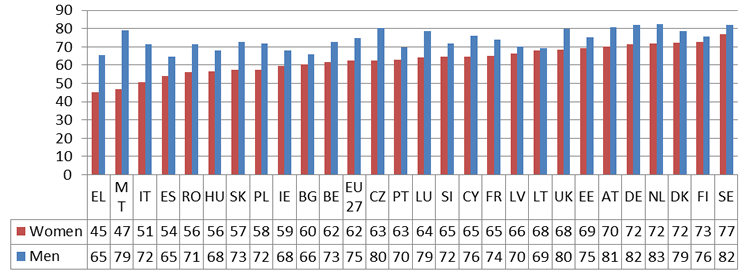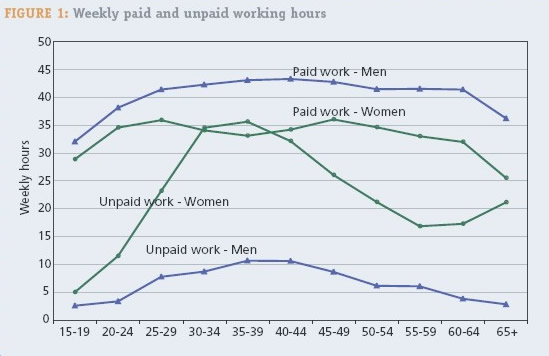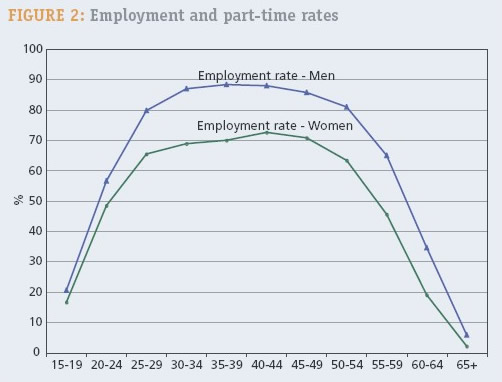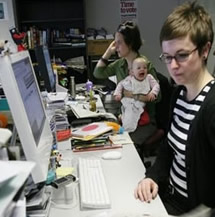Currently, just over half of women (58.8%) are employed, well below the overall target for men and women of 70% set out in the Lisbon strategy. The employment rate for men is already around the target (69,4%),
so strategies to provide more people with jobs must necessarily focus on the particular problems facing women when entering or rejoining the workforce. The main reason for this lower female employment rate is that women spend considerably more time on family and household responsibilities, making it difficult for them to participate fully in the labour market.
Women's employment rate and gender gap,
by country, 2012, EU27 (%)
 Adapting European jobs to become more family friendly is, therefore, not only good for workers and their families, but in fact necessary to ensure progress towards the ambitious objectives of making Europe ‘the most competitive economy in the world’.The research of the European Foundation for the Improvement of Living and Working Conditions in Dublin highlights the fact that the difference between the amount of unpaid work carried out by European men and women is huge. This is the case across all age groups, but it is particularly important for those aged 30 to 45, the years in which family responsibilities are most pressing (see Figure 1).
Adapting European jobs to become more family friendly is, therefore, not only good for workers and their families, but in fact necessary to ensure progress towards the ambitious objectives of making Europe ‘the most competitive economy in the world’.The research of the European Foundation for the Improvement of Living and Working Conditions in Dublin highlights the fact that the difference between the amount of unpaid work carried out by European men and women is huge. This is the case across all age groups, but it is particularly important for those aged 30 to 45, the years in which family responsibilities are most pressing (see Figure 1).
According to Foundation estimates, European middle-aged female workers spend on average 20 to 25 more hours per week on care or housework duties than their male colleagues. This obviously has an impact on the number of paid working hours of men and women: whereas middle-aged men tend to work slightly longer hours than younger or older generations, women work fewer paid hours on average during the ‘family-intensive’ years, (see also Figure 1).




